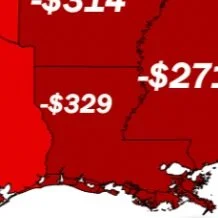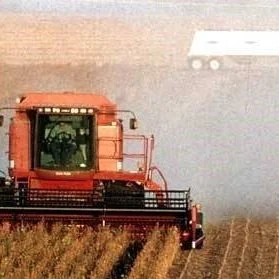More stink bugs are starting to show up in soybean fields. The stink bug complex in Louisiana soybean includes several species such as the brown stink bug, green stink bug, southern green stink bug, and perhaps the most notorious, the redbanded stink bug. Each species is capable of causing damage.
Read MoreThe Louisiana soybean crop has been severely affected by extreme heat and drought stress. Factors such as availability of irrigation, planting date, and soil type have all had a significant impact on the condition of plants.
Read MoreJust north of Port Allen, the relentless drought and scorching temperatures are putting local farmers to the test. Heath Morris, a sugarcane and soybean farmer, is one of those determined souls engaged in a battle with Mother Nature yet again.
Read MoreThis month’s 2023/24 U.S. corn outlook is for reduced supplies, lower domestic use, smaller exports, and tighter ending stocks. Projected beginning stocks for 2023/24 this month have been raised 55 million bushels higher based on a lower use forecast for 2022/23, reflecting reductions in corn used for exports, glucose and dextrose, and starch.
Read MoreFor the first time, researchers mapped Southern root knot nematode distribution in soybeans by county (parish) across the United States. But the Southern root knot nematode hinders Southern farmers in more than just soybeans.
Read MoreThe Crop Production report issued today by USDA’s National Agricultural Statistics Service (NASS) forecasted corn production up from 2022 and soybean production down from last year. Corn production is up 10% from last year, forecast at 15.1 billion bushels; soybean growers are expected to decrease their production 2% from 2022, forecast at 4.21 billion bushels.
Read More
Fall armyworms, Spodoptera frugiperda, are chronic insect pests in the state, with more than 60 plants reported as hosts, including various pasture grasses (and lawns) and agronomic crops including corn, alfalfa, cotton, soybeans, grain sorghum, and rice. They migrate to Louisiana from neighboring regions like Florida, Texas, Caribbean islands, and Central-South America, with infestations most common from late July to early August.
Read MoreFor more than two decades, and over the course of the last four farm bills, farm program payments have been based on a farm’s historical planted acreage, i.e., base acres, and not on actual plantings each year. Decoupling Agriculture Risk Coverage and Price Loss Coverage farm program payments prevents farmers from making planting decisions based on expected program payments. Instead, the current system ensures farmers evaluate only market supply and demand signals and expected returns per acre when determining which crops to plant each year.
Read MoreThe Brazilian second crop corn harvest continues to make progress, surpassing the halfway point over the weekend and likely reaching 55% complete as this is published online.
Read MoreSome analysts, in the wake of the July WASDE report from USDA, are projecting tne new crop price for November soybeans could reach $15 per bushel.
Read MoreThere will be a cotton/corn/soybean field tour at the Northeast Research Station in St. Joseph next Tuesday, July 25th, beginning at 5 pm. It will feature talks on row spacing, fertility, weed control, disease and insect control. It will also have one stop showing the difference between planting cotton into 2 different cover crops. There will be a meal after the tours are over.
Read MoreThe 77 farmer-leaders serving on the United Soybean Board approved $191.5M for the 2024 fiscal year budget. The budget supports research, promotion and education investment portfolios selected through USB’s Portfolio Development Process. These investments drive demand for U.S. Soy and return value to all U.S. soybean farmers. The total budget figure also includes execution, oversight and program support.
Read MoreIt is important to follow the label when applying any pesticide, including those labeled for harvest aid in soybean. Some restrictions found on harvest herbicide labels include soybean growth habit (indeterminate versus determinate), growth stage, percent mature pods and percent leaf drop. It is important to follow restrictions on spray volumes and preharvest intervals. Table 1 list herbicides that are labeled for preharvest application in soybean.
Read MoreRecently, there have been increased reports of corn earworms infesting soybean fields across the state. Corn earworm (aka bollworm or soybean podworm) can cause occasional but severe damage to soybean. The primary damage caused by corn earworm occurs during the larval stages when the insect feeds on the soybean flowers and pods. This feeding activity leads to direct yield losses as pods abort, or the larvae consume or injure developing seeds.
Read MoreThe reniform and Southern root-knot nematodes are the two most common nematodes found in Louisiana agricultural fields. These microscopic animals can cause big yield losses, and one scientist with the LSU AgCenter is working on solutions to this problem. AgCenter reporter Craig Gautreaux has the story.
Read More














